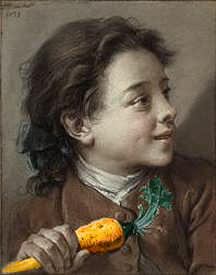10.28.2008
There's some interesting discussion of Top Ten lists over on Art Ed 2.0, and rather than just respond like a normal person, I'm feeling the need to blog about it. Worse, I'm feeling the need to break it up into a few posts. I don't promise that they will be concurrent, but I don't think I'm breaking any hearts by keeping you hanging. One of the discussions was about top ten Digital Tools for Art Educators. I have confined my list to online tools, because narrowing that down is hard enough. I'll do a software one next time.
10. Papercritters is a very silly way to use Web 2.0. That's why I love it. And who would have ever imagined mixing cut-paper creatures with Web 2.0 technologies?
9.Instructables proves that some of the coolest lessons don't come from teachers. Somehow, I think our students already knew that. More here.
8. To me, Robots and Monsters embodies the perfect combination of art, web 2.0, and social action. Basically, artist Joe Alterio realized he could raise more money for the San Francisco AIDS Marathon by selling some of his paintings in addition to running. So he asked people to send him 50 bucks and three words. He would then draw a custom monster or robot based on those three words. That creature would then be sent to you and posted on the Flickr gallery. Ok- so that's not really a "tool" in itself, but its an amazingly smart way to use 2.0 tools.
7.Twitter: Twitter has become a useful tool as a part of my Professional Learning Network. My friend Jeff has said that he likes Twitter because if he asks a technology question, he immediately gets all kinds of useful responses. I think that's partially because everyone and their mother follows him on Twitter. I kid. But seriously, Twitter seems kind of odd at first. You sign up, follow a few people. First thing you find out that some teacher in New Jersey has just picked up her kids from soccer practice, and someone else has read a good article on Wired that you just have to read right now. However, then you start following people who have similar interests and/or careers (lets' say, for example, oh I don't know... art eduction), and all of a sudden, you've made contacts, are exchanging ideas and sharing useful online tools.
5. With much guidance from my Second Life guru Chris Smith at his International Schools Island, I see a lot of potential in Second Life. Its not quite there yet as a useful tool in the classroom as there are still some issues of privacy and security to navigate, but its one to watch - and try out on your own to get a feel for it.
4. I've been meaning to write another post about Deviant Art after receiving an interesting response from a student on something I wrote at U Tech Tips. Basically, after extolling the virtues of the site, the student asked me not to use it in the classroom for fear of 'co-opting' it for education. I take his point though, and its food for thought- but if I'm not using it in my classroom, I'm sure interested to see how my students are using it - and they are using it. His is an interesting perspective anyway, I'll get back to that some other time.
3.YouTube: As a video teacher, this is always an important and useful resource - and although there is no shortage of bad stuff on Youtube, there is a lot of great things on here too... and sometimes its useful to look at the bad stuff to figure out what went wrong. I'm also going to sneak in Vimeo here, because although it doesn't have the same potentially massive audience that YouTube has, you can upload longer videos.
2. I'm constantly finding new uses for Flickr, but I think I covered some of my favorite uses in this post - Five Fave Functions for Flickr.
1. Maybe its because I've been so busy with these networks recently (shameless plug for Student Filmmakers for Film/Video students, THE.LENS for photography students, and IB Art), or maybe because I get so much out of Art Ed 2.0, but Ning seems like an amazingly powerful tool to connect students globally. So that's my current 'number one'.
Tags: Art Ed 2.0, Deviant art, Flickr, Twitter, Web 2.0














